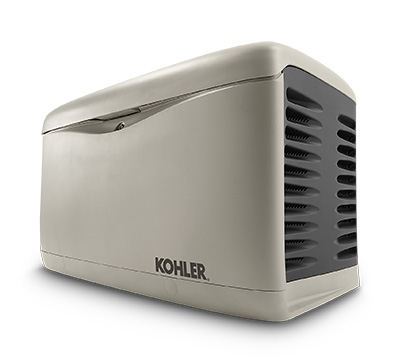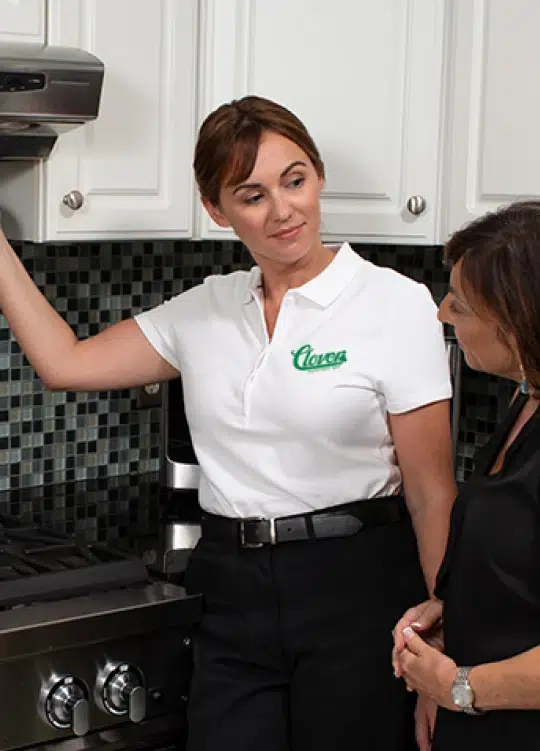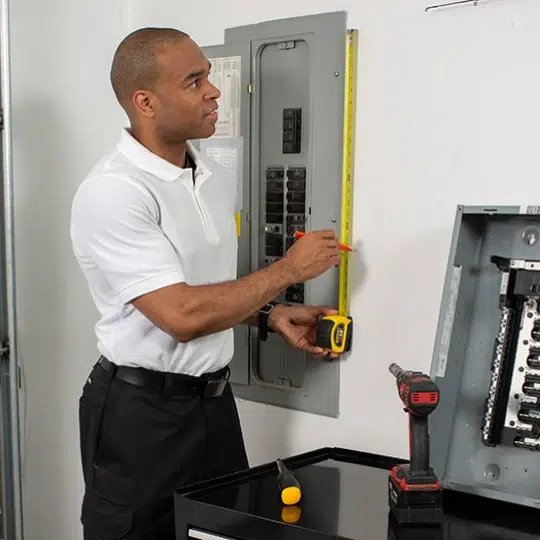What Is A Standby Generator?
A standby generator is an appliance that is installed outside of the home, like an air conditioner, to provide a backup source of electricity in the event of a power outage. When the generator detects a power outage it automatically turns on within seconds to provide power directly to your home’s electrical circuit breaker box. When utility power is restored, the generator shuts off automatically.
What Types Of Residential Standby Generators Are Available?
Residential standby generators are available in several different types, including:
- Air-cooled generators: These are the most common type of residential standby generator and are typically less expensive than liquid-cooled generators. They are also more suitable for smaller homes.
- Liquid-cooled generators: These are more expensive than air-cooled generators, but are more powerful and suitable for larger homes.
- Portable generators: These are smaller and less expensive than standby generators, but must be manually started and moved to provide backup power.
What Are The Advantages Of A Standby Generator Versus A Portable Generator?
A permanent standby generator offers several advantages compared to a standby generator:
- It turns on and off automatically
- A standby generator runs off your home’s natural gas supply, most portable generators run on gasoline
- It’s safer to operate than a portable generator, which must be located away from the home to prevent carbon monoxide poisoning
- It provides 24/7 backup power, whether you are home or away
- Increases the value of your home
Can I Install A KOHLER Generator Myself?
KOHLER recommends that you have a local KOHLER Generator dealer install your new generator. The licensed electricians at Clover Electric will help you choose the right generator to your home’s power needs while also ensuring the installation meets all local and national building and electrical code requirements.
How Do I Know What’s The Right Size Generator For My Needs?
Because backup generators are available in a range of sizes and each home has unique power needs, we recommend calling us for a generator assessment.
The size of the generator you need for your home depends on several factors, including:
- The amount of power needed to run appliances and electronics during an outage
- The size of your home
- The type and number of appliances and electronics you need to power during an outage
After learning about your requirements and evaluating your home’s electrical system, we will make recommendations for selecting a generator with the correct wattage and circuit coverage to meet your needs. Depending on your needs, you may only want to power a few circuits, or provide power to your entire home.
How Does A Standby Generator Connect To My House?
A standby generator connects to your home using an automatic transfer switch (ATS). The ATS ensures that only power from the utility company or your generator can power your home at one time. If utility power is lost, the generator control panel detects the outage and signals the transfer switch to shut off the connection with the utility supply and complete the connection with the generator so it can provide power to your home. Your electrician will install the automatic transfer switch at the time they install the generator unit.
See related: The Basics of Generator Transfer Switches
What Kind Of Fuel Does It Use?
KOHLER standby generator can run off either your home’s natural gas or LP gas supply.
What Happens If A Generator Becomes Overloaded?
KOHLER generators are equipped with overload protection. If an overload were to occur, the generator’s circuit breaker would trip, disconnecting the unit from the load. Once the condition that caused the overload is corrected, the breaker for the generator can be reset.
What Is The Cost Of A Residential Standby Generator?
The cost can range from a few thousand dollars for a small air-cooled generator to tens of thousands of dollars for a large liquid-cooled generator. It will also depend on the features and level of automation you choose.
What Is The Installation Process For A Residential Standby Generator?
The steps to install a generator in your home include:
- Assessment of your home’s electrical system and fuel source
- Determining which circuits need to be powered by the genearator
- Selection of the appropriate generator for your needs
- Installation of the generator and fuel system
- Connection of the generator to your home’s electrical system
- Testing of the generator to ensure it is working properly
Have more questions about standby generators? Use our contact form, or Give us a call anytime.



